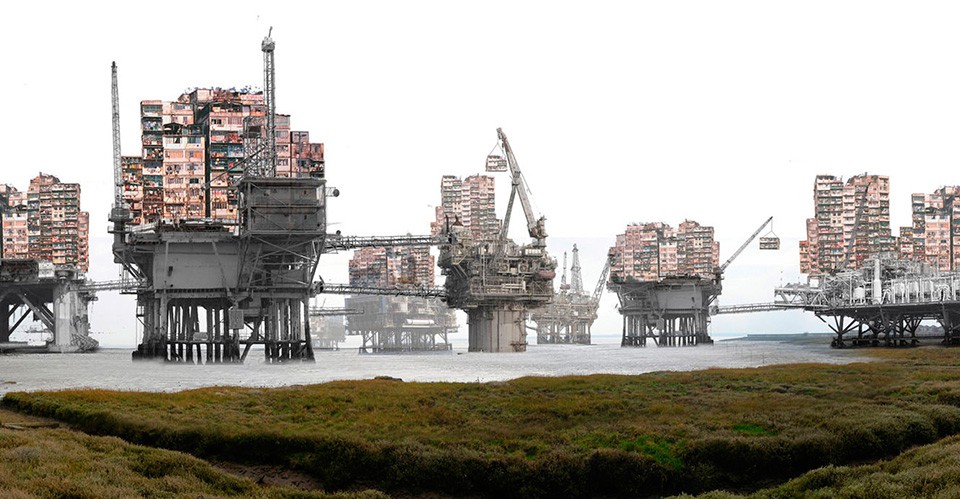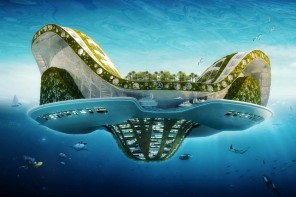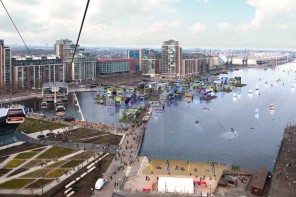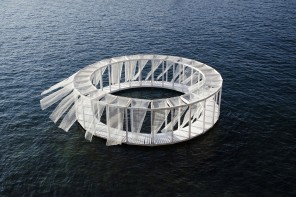Thames Estuary Floating City 2030 Aquatic Urbanism – Recycling Ships and Marine Structures
Anthony Lau, Bartlett School of Architecture, London (2008)
Project Description
With the pressure of increasing population and urbanisation, cities have not choice but to build on flood plains or in low lying areas. One side consequence of humanity’s rapid expansion in (arguably) global warming, resulting in rising sea levels and increasingly extreme weather.
This conflict between expansion and climatic change threatens coastal cities around the world. One tenth of the world’s population live in coastal cities, most of which are low-lying coastal populations in poorer developing nations. Even a 1m sea level rise will result in a widespread economic and social disaster.
The future of human habitation and expansion is to adapt to living on water. Every year, hundreds of ships and other floating structures are scrapped. This proposal gives new life to decommissioned ships and oil platforms by converting them into hybrid homes adapted for aquatic living. The Thames Estuary is chosen as the site for aquatic urban expansion, and will be an alternative solution to the current plans to build 120,000 new homes on flood plains in the Thames Gateway.
The regeneration of the riverside through the reuse of dockyards, river transport and reverting to a natural hydrology of flood plains will bring nature and life back to the River Thames. Sustainability through the reuse of marine structures and reducing energy and waste will be a high priority when living on the water.
By utilising the flooded landscape, a floating city of offshore communities, mobile infrastructure and aquatic transport will allow the city to reconfigure through fluid urban planning. Wave, tidal and wind energy will be ideal for this offshore city and the inhabitants will live alongside the natural cycles of nature and the rhythms of the river and tides.
Most modern floating architecture involves new-build modular systems for mass production. Although this may be the most efficient for space planning, it often lacks character.
The multitude of hull shapes and sizes can inspire unique and inventive designs. The proposal aims to express the beautiful forms and internal steel structures of hulls. The hulls serve as nautical reminders of the ship’s past and our previous closeness to water, which we will now embrace once again.
This strategy for creating a self sufficient floating city by reusing ships and marine structures can also be applied to island nations such as the Maldives. Over 80% of its 1,200 islands are around 1 m above sea level. With sea levels rising around 0.9 cm a year, the Maldives could become uninhabitable within 100 years. Its 360,000 citizens would be forced to adapt and they could become the first floating nation, according to the concept of floating city 2030












